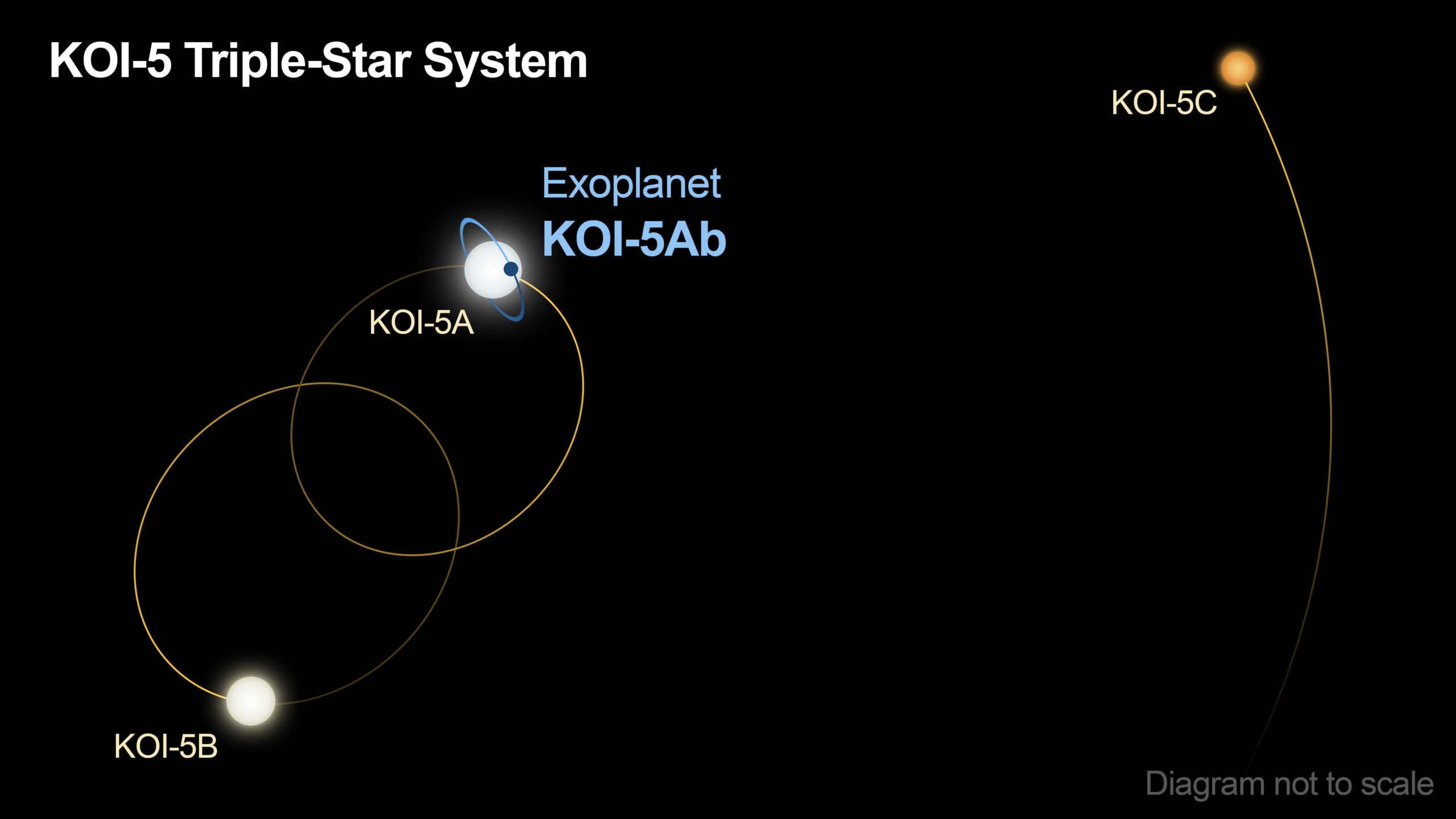Astronomers have just confirmed the existence of a planet in a triple system 1800 light years from Earth. This world is particularly unusual due to its odd orbital alignment.
It all started in 2009, shortly after the commissioning of the Kepler mission. Now retired, the space telescope had at the time spotted what was thought to be a planet about half the size of Saturn evolving in a multi-star system. Dubbed KOI-5Ab , this potential world was only the second candidate of its kind isolated by Kepler. Despite everything, this system was put aside by NASA which, thanks to its telescope, began to accumulate the discoveries of exoplanets. Recall that during his service, Kepler isolated no less than 4,760, of which about half have yet to be confirmed .
As a result, over the past few years, KOI-5Ab has almost fallen into oblivion. Then, a few months ago, David Ciardi and his team at NASA's Exoplanet Science Institute finally observed this system with "new eyes", namely the TESS satellite and the Keck Observatory in Hawaii.
Thanks to these instruments, the researchers were able to confirm the presence of the planet and its three stars using two proven methods:transit (thanks to TESS) and radial speed (thanks to the Keck telescope).
The first involves a planet passing in front of its star from our perspective, causing the latter's light to dim briefly, while the second relies on the spectral observation of the stars, looking for signs of "flickering". In other words, astronomers here will notice if the star is moving away or getting closer to Earth. This movement is caused by the presence of planets which exert a gravitational influence on their star.
KOI-5Ab is a gas giant probably as large as Neptune. Note that while it does indeed evolve in a triple system, it only orbits a single star, KOI-5A, once every five days . This host star is caught in a mutual orbit with a star called KOI-5B. The two companions turn around approximately every thirty years . Finally, a third more distant star, named KOI-5C, orbits this pair once every 400 years .

While discoveries of triple planetary systems are rare enough, this one is even stranger in that KOI-5Ab and KOI-5B do not share the same orbital plane (as seen above). This organization here challenges conventional theories of planetary formation. For the time being, researchers still do not know the reason for this misalignment.
"We don't know of many planets that exist in three-star systems, and this one is very special, because its orbit is skewed “, indeed notes David Ciardi. "We still have many questions about how and when planets can form in multi-star systems and how their properties compare to planets in single-star systems “.
Researchers now aim to study this system in more detail in order to better understand how the universe can "manufacture" planets.